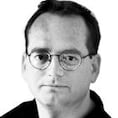The Bulletin magazine, founded in 1880, once said that all "true Australians are white men". It fiercely defended the White Australia Policy adopted after Australian independence in 1901, proclaiming that "no nigger, no Chinaman, no lascar, no kanaka, no purveyor of cheap, coloured labour, is an Australian".
The Bulletin lasted until 2008, by which time it had become a fine publication, long embarrassed by its racist past. But what would its original owners, editors and writers have made of today's Australia, whose population has just passed 23 million?
They would find a country changed utterly. A hundred years ago, the average Australian was a 24-year-old male farmer who was likely to be Anglican. Today it is a 37-year-old woman who works in retail and is, heaven forbid, Catholic. Even more likely to make the Bulletin's then owners turn in their grave is that she is increasingly likely to have been born overseas (a one in four chance) or have at least one parent born abroad (a 46 per cent chance).
As for the blonde, beachside cliches you see on television shows such as Home And Away , forget it, the real Australia looks very little like that.
Of all Australia’s cities, Sydney is experiencing demographic change fastest. The southwestern suburb of Bankstown was once so Irish it was officially known as Irish Town. Former prime minister Paul Keating grew up there.
Today it is one of the most multicultural suburbs in Australia, with more than 60 languages spoken (the Australian average is that 19 per cent of people speak a language other than English at home – most commonly Mandarin, Italian and Arabic).
Twelve per cent of Bankstown’s residents were born in Vietnam, and 8.2 per cent in Lebanon. It is also home to significant numbers of people born in China, Macedonia and several African countries.
Transformed
Well-known Sydney structures, such as the Opera House and Harbour Bridge, are on the east coast, but the city is vast and its geographic centre is the western suburb of Parramatta. Long derided as a place where less well-off people of British and Irish background lived, Parramatta has been transformed in recent years by emigration from India. This has helped see the number of Hindus in Australia almost double between 2006 and 2011, from 148,130 to 275,534.
Catholicism, at 25.3 per cent of the population, is Australia’s biggest religion, though those ticking the “no religion” option in the census rose to 22.3 per cent. The once dominant Anglicans have fallen to 17.1 per cent, while non-Christian religions are growing. The biggest of these is Buddhism (2.5 per cent of the population), Islam (2.2 per cent) and Hinduism (1.3 per cent).
The changes in religious and ethnic demographics are also reflected in sport. A generation ago the Canterbury Bulldogs rugby league club’s players and fan base were predominantly of Irish Catholic background. Today supporters are increasingly of Lebanese Muslim background. Though the squad still features players with names such as Finucane and Keating, there are also several Pacific Island and Maori background players with names like Halatau and Inu.
But soccer can safely lay claim to being the country’s most ethnically diverse sport. Football Federation Australia recently announced the findings of a multicultural review into the professional A-League. It found 56 nationalities represented in the 10 clubs, with 68 per cent of players having at least one parent born overseas.
A better country
Former Australian international and now sports broadcaster Craig Foster says this makes for a better country. "Through football, we have the greatest role models and tools for integration and enhanced understanding for all sections of our society," he said. "Football is a window to modern Australia and a powerful tool to create harmony in the decades to come."
Last Tuesday a newborn baby tipped Australia’s population over to 23 million. The following day Josie McAdam, originally from Tydavnet, Co Monaghan, turned 82. She and her late husband Patrick and two children (two more were born in Sydney) emigrated 49 years ago. Mrs McAdam has seen huge changes in that time.
“Emigration has made such a difference to Australia. The people are not so narrow-minded now and realise the cultural and economic benefits they get from people coming from overseas,” she says. The biggest benefit has been in the food, she adds. “Before multiculturalism it was very much meat and two veg here.”
The White Australia Policy was a stain on Australia until it was finally fully dismantled in 1973. The Australia the 23 millionth person was born into on Tuesday night is a much better place for its ending.
